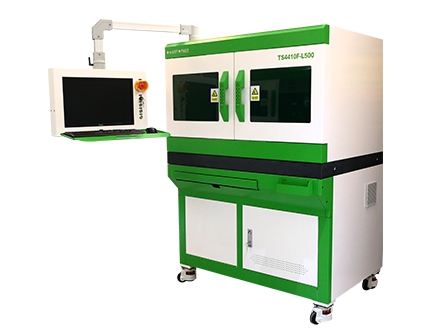In the world of precision electronics, achieving exact resistance values is critical to ensuring optimal performance, especially in sensitive applications like automotive sensors, medical devices, and communication systems. That’s where laser trimming equipment comes into play, enabling engineers to fine-tune resistor values with micron-level accuracy.
What is Laser Trimming Equipment?
Laser trimming equipment is a specialized machine used to adjust the resistance of thick or thin film resistors by precisely removing material using a laser beam. This adjustment is permanent, precise, and highly repeatable — making it the preferred choice for high-reliability applications.
Modern laser trimmers like the TS4210D Multi-Function Laser Resistor Trimmer support advanced features such as:
-
Multi-channel measurement (up to 96 channels)
-
Automated alignment and probe handling
-
Compatibility with thick film and thin film components
-
Support for various trimming film types and patterns
These machines help reduce production time, eliminate manual errors, and meet the strict quality demands of today’s microelectronic markets.
Understanding Laser Trimming Resistors
Laser trimming resistors are passive components whose resistance values are finely adjusted by laser processing. Typically used in thick-film hybrid circuits, these resistors are manufactured with slightly lower resistance values and then trimmed up to the desired specification using a laser.
The trimming process may include:
-
Abrasion trimming: Removing resistor material with laser cuts
-
Isolated trimming: Cutting specific shapes in trimming film to control the resistance path
-
Active feedback trimming: Involving live measurements during trimming for real-time correction
By using laser trimming resistors, manufacturers can achieve tolerance levels as tight as ±0.01%, which is especially important in analog circuits and sensor calibrations.
Why Trimming Film Matters
The quality and consistency of the trimming film significantly affect the precision and reliability of the final resistor value. Trimming films are usually composed of resistive pastes printed onto ceramic substrates, and they are engineered to react predictably under laser ablation.
Key factors when selecting or designing trimming films include:
-
Resistance range
-
Thermal stability
-
Film thickness and uniformity
-
Compatibility with laser wavelength and power
Proper integration of trimming film with laser trimming equipment ensures long-term electrical performance, low drift, and environmental resistance.
Applications of Laser Trimming Equipment
Laser trimming plays a key role in producing components for:
-
Automotive pressure sensors
-
MEMS devices
-
Analog amplifiers
-
RF attenuators and filters
-
Instrumentation equipment
-
Aerospace and defense modules
Thanks to automation and software intelligence, modern laser trimmers can handle batch jobs, record trimming data, and interface with MES/ERP systems, ensuring both traceability and efficiency.
Conclusion
As electronics continue to demand higher precision and smaller tolerances, laser trimming equipment is becoming a cornerstone of quality manufacturing. The integration of advanced trimming software, high-speed alignment, and compatibility with a wide range of laser trimming resistors and trimming film materials makes this technology a must-have for modern production lines.
If you’re exploring options for upgrading your resistor trimming process or looking to enhance your hybrid circuit production, investing in the right laser trimming system is the smartest move.




